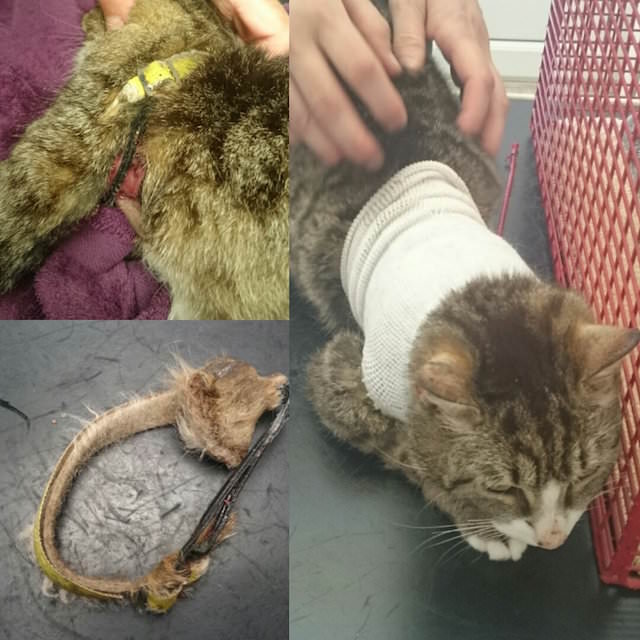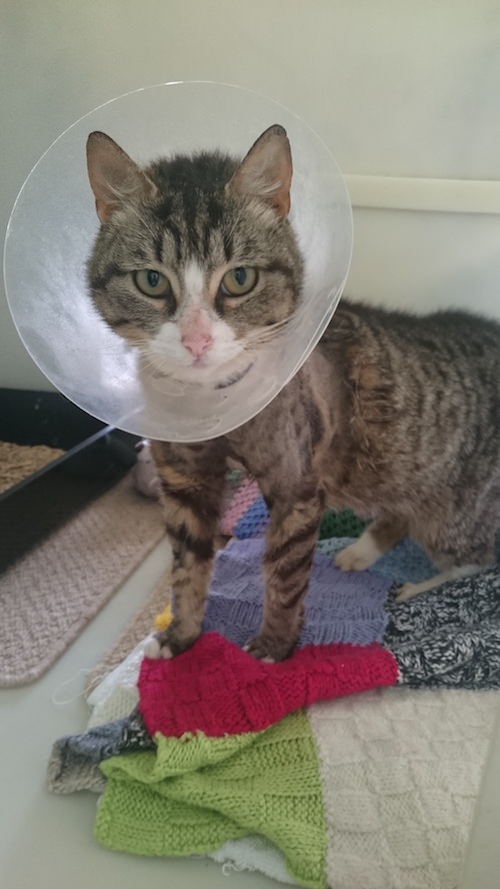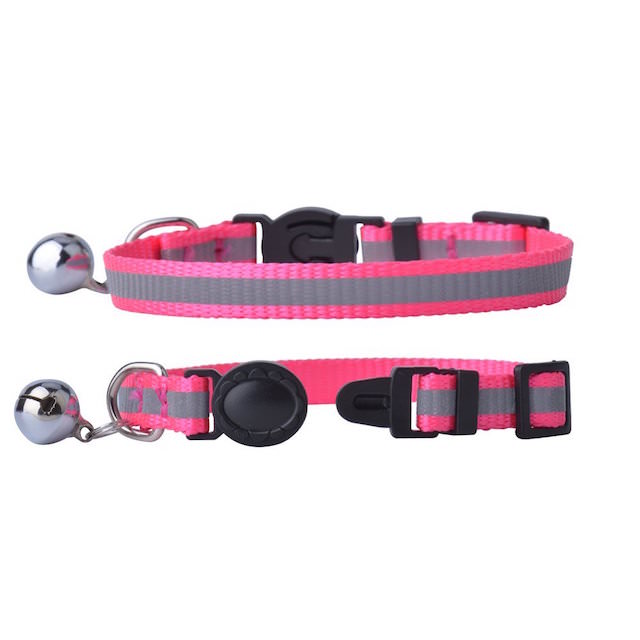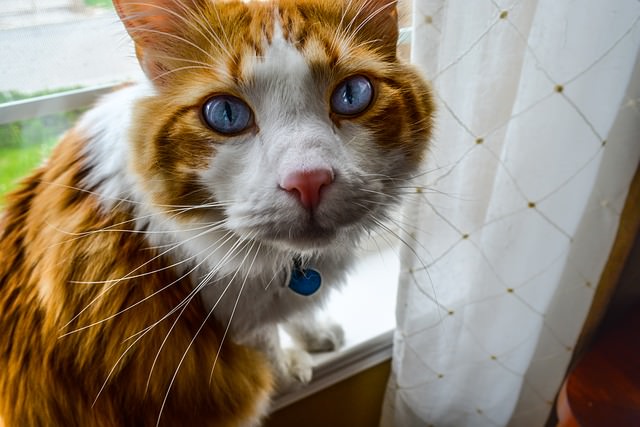Most pet parents would consider putting a collar on their pet to be an act of safety; after all, if their companion gets loose, the identification listed on it could mean the difference between being reunited and never seeing them again.
But as it turns out, some (not all!) types of cat collars can actually pose a danger to your kitty. After witnessing over 100 cats getting injured by their own collars across the UK, the RSPCA (Royal Society for the Prevention of Cruelty Animals) has issued a warning to cat parents, as well as offered ideas for safer alternatives.
Warning: An image below may be disturbing for some readers.
So what kinds of dangers do collar-wearing cats face? For one, they can get things wedged under them, from debris to their own limbs. If a cat gets into a fight, his opponent’s teeth may get stuck in it, or felines who enjoy climbing could get their collar caught on a branch. Both scenarios could lead to injury, or worse, strangulation.
The types of collars most likely to pose these kinds of dangers are buckle collars, elastic collars, and even flea collars, according to the RSPCA. The thing they all have in common is that there’s no easy way for cats to release themselves in the event of an emergency.
In a press release, the organization introduces Brian, a young cat who was taken to the vet after getting his front leg trapped in his collar. He’d pulled his leg completely through the opening, and the tension of the taut collar resulted in it cutting into his neck and armpit.
Alice Potter, RSPCA Cat Welfare Expert, said in the press release:
“If the collar gets caught on something the cat may try to free itself by using its foot and then, in turn, get its leg stuck with the collar ending up under the cat’s armpit causing painful injury.”

Another case involved Nugget, a kitty who also got her limb caught up, possibly for several weeks. When she finally got help, the restricting collar had embedded itself into her neck and under her arm, leaving deep and infected wounds.

Luckily both kitties are on the road to recovery, and though no families have claimed them yet, they’re currently in safe and caring hands.

Potter said:
“These stories serve as an important reminder to cat owners to only use quick release collars on their pets as other collars can be lethal.
All too often we get called to cats that have become injured due to a collar as there are too many dangerous collars on sale. We would strongly advise against purchasing a collar with buckles that don’t snap open, or collars made from elastic.
The majority of flea collars are also not advisable as they do not have safety buckles, so we would encourage pet owners to prioritise safety first and give your cat flea treatment another way.”

So what’s the alternative? Consider dawning your kitty with a quick-release or breakaway collar, which will pop open with the force of getting snagged or caught on something, or having an object wedged underneath it (like a limb). Of course, the most permanent method of identification is a microchip, which is always “on” your kitty – even if the collar comes off.
Potter added:
“Cats are natural hunters and curious explorers that enjoy climbing trees or pushing through tight spots and for these reasons it is imperative that any collar is designed to free the cat should they become snagged during their adventures.”
The press release closes with a call for information on the two kitties in this story.
If you are the owner of either Brian or Nugget, or have any information which may help trace them, please contact the inspectorate appeal line on 0300 123 8018.
As it turns out, dogs also face some dangers when it comes to their collars. For more information on how to keep canines safe, check out The Surprising Dangers Of Dog Collars.
By switching your pets’ collars, you could avoid vet bills, protect them from injury, or even save their lives.

